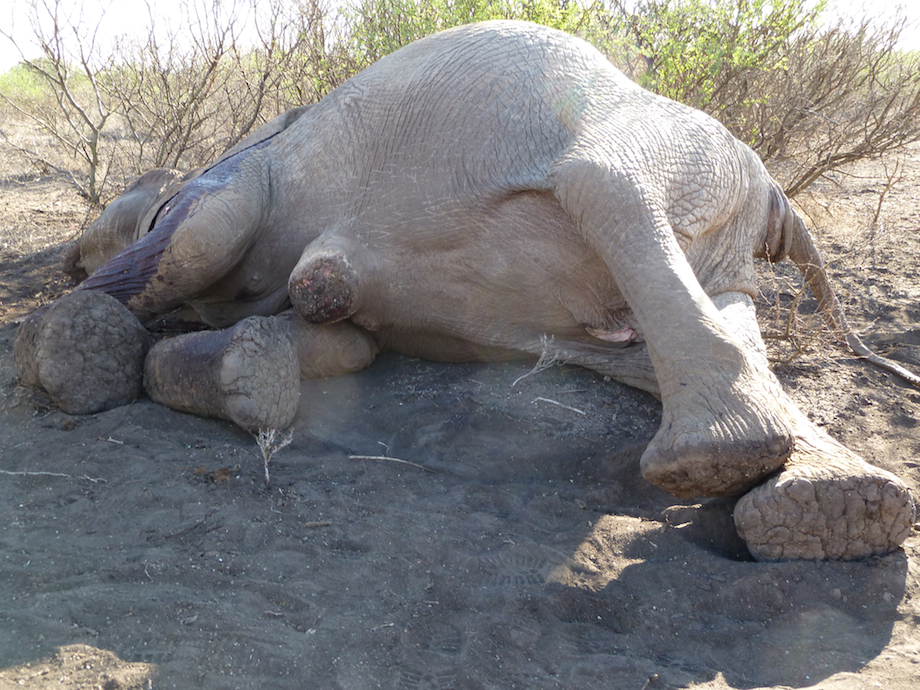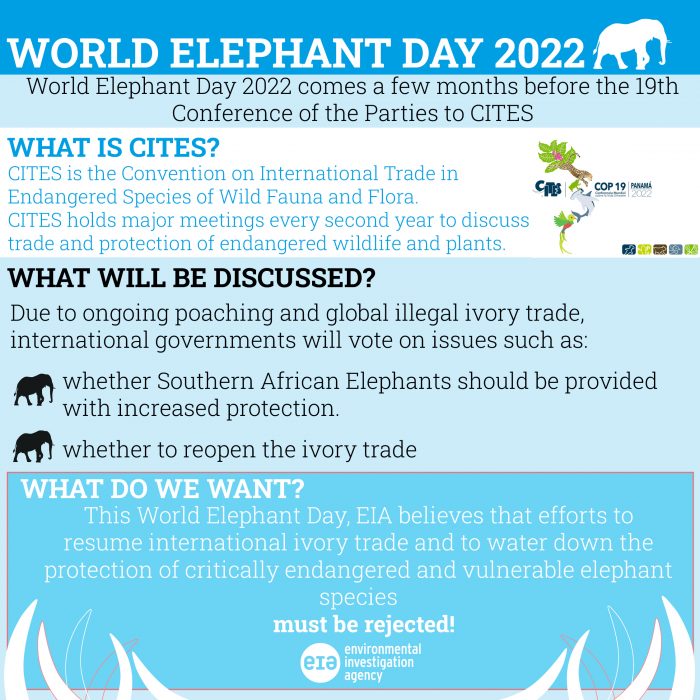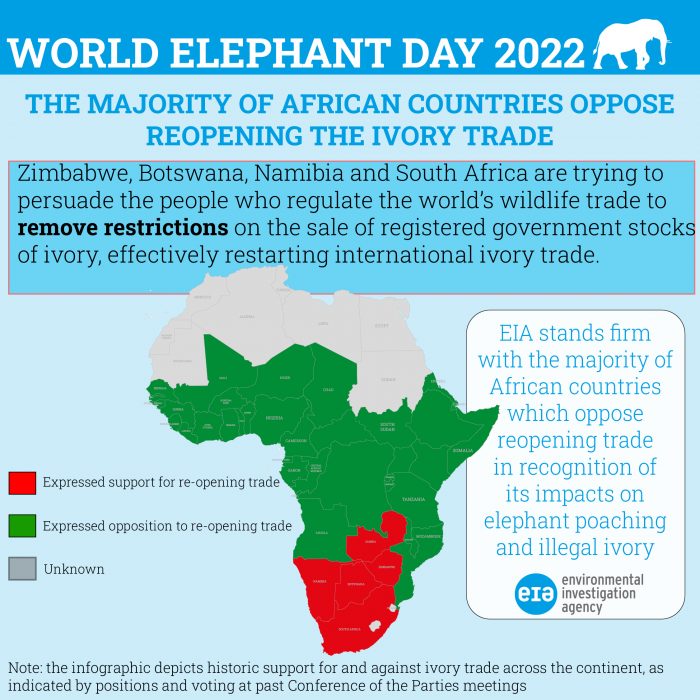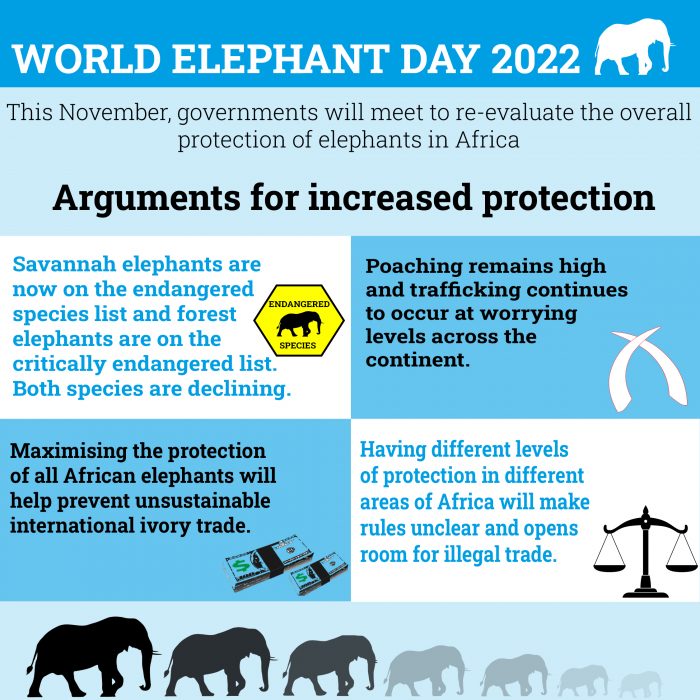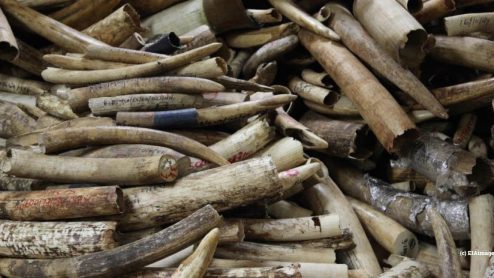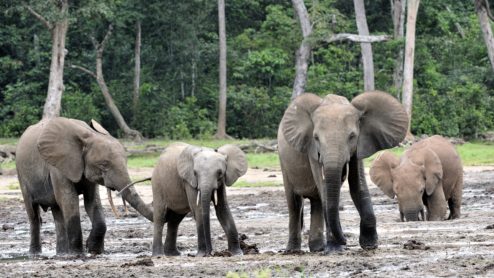On World Elephant Day 2022, these endangered giants are facing a renewed ivory trade threat
Today (12 August) is World Elephant Day 2022 and, in a year full of important meetings likely to impact elephant conservation, we’re taking the opportunity to flag up key issues.
Despite recent ivory trade bans in countries such as China, the US and the UK, international action is still necessary to protect savannah elephants in East and Southern Africa and forest elephants in West and Central Africa as both species remain in decline across much of their range. Asian elephants are also in serious decline.
The primary cause of these population declines continues to be poaching to feed the international ivory trade.
Organised transnational criminal syndicates are deeply involved in the illegal ivory trade, fuelling corruption and conflict while undermining the rule of law. Along with habitat loss and human-elephant conflict over diminishing resources and territory, the ivory trade still threatens the survival of these amazing creatures, whose decline will in turn seriously impact the future of healthy ecosystems, climate change mitigation and global economies.
Most of the key meetings in 2022 affecting elephants will be held under the Convention on International Trade in Endangered Species of Wild Fauna and Flora (CITES), especially the 19th meeting of the Conference of the Parties (CoP19) in Panama City, Panama from 14-25 November.
The key issues EIA believes Parties (i.e. countries which are signatory to the Convention) to CITES should be focusing on in relation to elephants are the alarming bids by some southern African nations to resume ivory trade.
We are also drawing attention to attempts to increase and harmonise the protection of elephants across the continent, especially in light of ongoing worrying trends in illegal ivory trade and illegal elephant killing.
We’ll be making our case directly to the relevant authorities and, to help spread awareness in advance, have produced these special infographics.
Keep an eye out for our more detailed briefing covering key issues from our different programmes of work, due to be published in September.
At CITES CoP19, in a context of ongoing poaching and global illegal ivory trade, international governments are once more set to vote on issues such as whether to reopen ivory trade and whether southern African elephants should be provided with increased protection.
This World Elephant Day – and on all others – EIA firmly believes efforts to resume international ivory trade and to water down the protection of critically endangered and vulnerable elephant species must be unequivocally rejected.
Ivory trade is the reason why elephants are on the brink of extinction and previous moves by CITES authorising ‘’one-off’’ ivory sales unfortunately backfired, leading to an increase in illegal killing and laundering of ivory into the black market.
Zimbabwe has submitted a proposal to CoP19 pertaining to the elephant populations of Zimbabwe, Botswana, Namibia and South Africa, seeking to remove current restrictions on the sale of registered government stocks of ivory, a move effectively restarting international ivory trade.
EIA stands firm with the majority of African countries, including most elephant range states, which oppose reopening trade in recognition of its impacts on elephant poaching and illegal ivory trade.
Under the CITES system, Appendix I species are those which are the most endangered and threatened with extinction and are, as a result, prohibited from being traded internationally..
Most African elephant populations are listed under Appendix I, save for those in Botswana, Namibia, South Africa and Zimbabwe. Despite this, clear annotations in the listing restricts trade in these populations, including trade in their ivory.
But at CoP19, two opposing proposals will go head-to-head, one of them (submitted by Burkina Faso and a number of other countries) calls for all elephant populations to be uplisted to Appendix I to harmonise the protection of these endangered animals.
However, the other proposal, submitted by Zimbabwe, is seeking the removal of the restrictions that prohibit ivory trade for the Appendix II populations of Botswana, Namibia, South Africa and Zimbabwe, effectively legalising the sale of government ivory stockpiles which would restart international ivory trade despite dire repercussions on poaching and illegal trade.
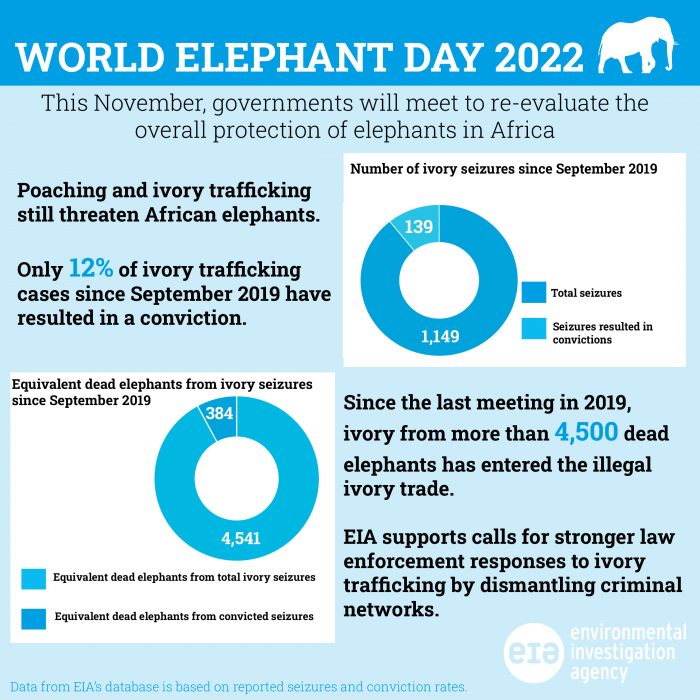
Poaching and ivory trafficking still threaten African elephants. Since the last Conference of the Parties in 2019, ivory from more than 4,500 dead elephants has entered the illegal ivory trade.
Worryingly, just 12 per cent of ivory trafficking cases since September 2019 have resulted in a conviction.
EIA continues to call on Parties to adhere to CITES Resolution 10.10 (revised at CITES CoP18), which requires law enforcement authorities in relevant countries to strengthen their responses to ivory trafficking by dismantling the operations of criminal networks to save elephants from disappearing in the wild.


